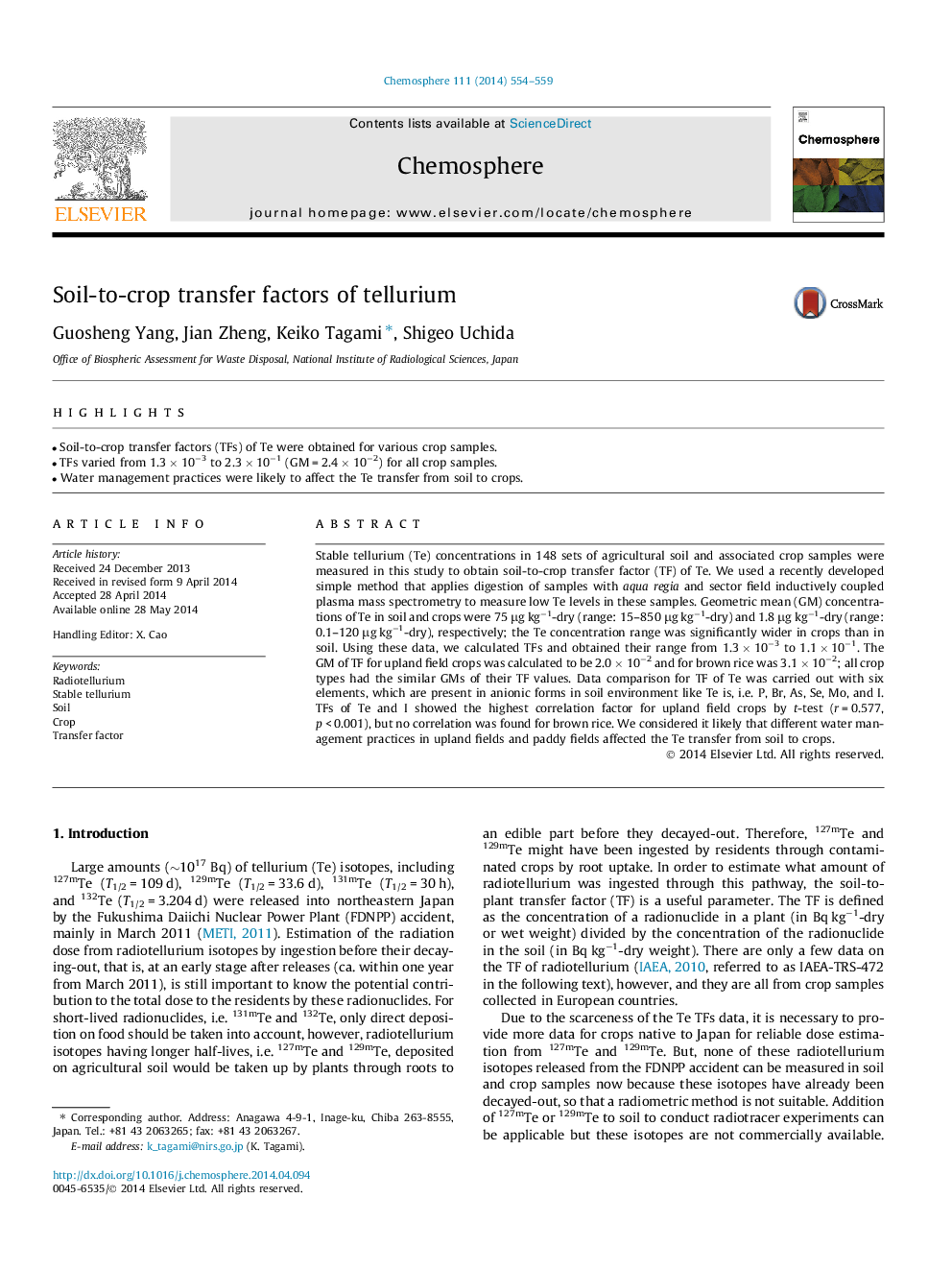| Article ID | Journal | Published Year | Pages | File Type |
|---|---|---|---|---|
| 6308726 | Chemosphere | 2014 | 6 Pages |
â¢Soil-to-crop transfer factors (TFs) of Te were obtained for various crop samples.â¢TFs varied from 1.3 Ã 10â3 to 2.3 Ã 10â1 (GM = 2.4 Ã 10â2) for all crop samples.â¢Water management practices were likely to affect the Te transfer from soil to crops.
Stable tellurium (Te) concentrations in 148 sets of agricultural soil and associated crop samples were measured in this study to obtain soil-to-crop transfer factor (TF) of Te. We used a recently developed simple method that applies digestion of samples with aqua regia and sector field inductively coupled plasma mass spectrometry to measure low Te levels in these samples. Geometric mean (GM) concentrations of Te in soil and crops were 75 μg kgâ1-dry (range: 15-850 μg kgâ1-dry) and 1.8 μg kgâ1-dry (range: 0.1-120 μg kgâ1-dry), respectively; the Te concentration range was significantly wider in crops than in soil. Using these data, we calculated TFs and obtained their range from 1.3 Ã 10â3 to 1.1 Ã 10â1. The GM of TF for upland field crops was calculated to be 2.0 Ã 10â2 and for brown rice was 3.1 Ã 10â2; all crop types had the similar GMs of their TF values. Data comparison for TF of Te was carried out with six elements, which are present in anionic forms in soil environment like Te is, i.e. P, Br, As, Se, Mo, and I. TFs of Te and I showed the highest correlation factor for upland field crops by t-test (r = 0.577, p < 0.001), but no correlation was found for brown rice. We considered it likely that different water management practices in upland fields and paddy fields affected the Te transfer from soil to crops.
